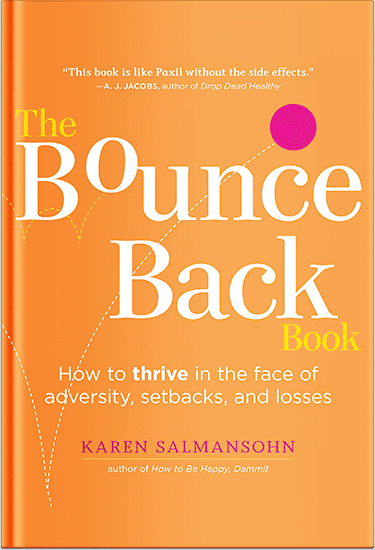 One of my coaching clients in Texas had to deal with a complicated personal injury case. As a result, I learned a lot about the collateral source rule in Texas from this work relationship. So I wanted to share what I learned – but in a simplified way. After all, a lot of this legal stuff feels like complicated mumbo jumbo.
One of my coaching clients in Texas had to deal with a complicated personal injury case. As a result, I learned a lot about the collateral source rule in Texas from this work relationship. So I wanted to share what I learned – but in a simplified way. After all, a lot of this legal stuff feels like complicated mumbo jumbo.
So, here’s an explanation about all of this – in easy to understand words – so you feel more in charge of your life and choices.
The collateral source rule is a legal law that prevents proof of a plaintiff getting money from a party other than the defendant from whom remedies are sought from being admitted into evidence.
Translation?
The collateral source rule states…
- Money received from a third party does not lessen the amount due by a party at fault.
What Does a Collateral Source Rule Mean?
Any recompense that is given to an injured individual from a party other than the defendant (the person legally liable for the damages) should not be deducted from the total of damages recovered from the defendant. While navigating through the complexities of the Collateral Source Rule in Texas, another legal aspect that might interest those in the entrepreneurial field is forming a company. If you’re considering setting up a business, learning how to open an llc in Texas can provide foundational knowledge on starting your endeavor on firm legal grounds.
Basically… in other words…
- The rule prevents contributions from a third party from lessening the amount the defendant is on the hook for in a case.
The collateral source rule is usually applied when the injured person’s insurance pays for healthcare related to the injuries.
Under the collateral source rule, the injured individual may get reimbursement from the insurance provider and the accused.
Aside from insurance, collateral sources also include things like:
- worker’s comp
- Social Security
- Medicaid
- services provided for free to assist the wounded individual
The collateral source rule has a second aspect! This part deals with the admission of evidence in court during a personal injury trial.
The rule states: Any payments other than those from the offender, including the plaintiff’s healthcare insurance, are not considered by the jury.
How Can a Collateral Source Rule Impact Personal Injury Cases?
The collateral source rule is sophisticated and difficult to grasp for the typical individual.
However, there are certain exemptions to the collateral source rule.
When certain payment sources do not influence an injury claim, the claimant should be aware.
While the collateral source rule usually does not include penalties from being lowered, a claimant may be ordered to reimburse compensation in rare situations.
As a result, certain “tort reform” supporters have criticized the collateral source rule. These people believe that it is unreasonable to force a defendant (the person who conducts a tortious act) to pay restitution for which the plaintiff has already been reimbursed.
The Texas Legislature passed the Texas Civil Practice and Remedies Code 41.0105 in 2003, which states that the plaintiff can only recover medical or healthcare expenditures to the amount paid or expended by or on the plaintiff’s account.
What Is the Core Logic Behind the Collateral Source Rule?
Texas’s collateral source rule and other parts state that a defendant should not profit from a victim collecting insurance premiums from the victim’s insurers. The collateral source rule allows people to buy their private health insurance policies to get reimbursement – whether or not they are involved in a personal injury lawsuit.
The collateral source rule ensures that an injured person is not punished for having the foresight to buy private insurance. In personal injury proceedings, defendants must pay for any losses they cause.
Victims can get much-needed recompense from other means while their cases were pending. As a result, the collateral source rule bars these offenders from having their verdicts lowered.
What Are the Medical Liens on Settlement?
Another decrease that an injury victim may face after getting a settlement is any liens put on their settlements by debtors. For example, clinics or other health care providers can try this angle. A lien is a court ruling that is put on a person’s property to fulfill a third-party obligation.
A lienholder may have a legal claim to reimbursement in certain situations. But settling a lien can be negotiated. In other terms, your lawyer may be able to bargain with the lienholder to reach a satisfactory settlement that is far less than the lienholder’s initial demand.
Many healthcare professionals will try to get more money than they are legally entitled to. For instance, a healthcare professional may bill a patient for a $20,000 medical treatment. Meanwhile the patient’s insurance should only have required them to pay a $2,000 threshold and a small co-payment. The healthcare practitioner is only entitled to the value of the deductible and copayment in such instances. They are not entitled to the total cost of the operation.
What Are the Main Damages During a Personal Injury Case?
Plaintiffs who take their claims to court in most personal injury instances in Texas may be granted monetary damages. Compensatory damages are often made up of two losses: economic and non-economic.
- Economic damages are quantifiable costs that a sufferer has incurred or will incur that can be estimated and demonstrated. Medical bills, lost wages and earnings, and property loss are common economic damages.
- Similarly, non-economic damages are significantly more arbitrary. Loss of companionship, misery, suffering, and deformity are some of the most common non-economic damages judgments.
- Punitive damages are yet another category of damages that a plaintiff may get in a small number of circumstances. Punitive damages are paid to punish the offender for their wrongdoings and to discourage future wrongdoings. According to Texas Civil Practice and Remedies Code 41.003, the court can only grant punitive damages if a claimant can show that their harm was caused by deception, malice, or criminal incompetence by proof beyond a reasonable doubt.
While economic damages in Texas personal injury claims are unrestricted, non-economic and punitive damages are limited. Non-economic damages in a medical negligence claim, for instance, cannot exceed $250,000 in instances involving doctors or medical professionals. Plus $500,000 in situations involving several healthcare professionals.
Punitive damages are likewise limited to the greater of $200,000 or nearly twice the measure of financial losses, plus an equivalent number of non-economic damages up to $750,000. Claims against governmental bodies are similarly restricted to a maximum of $250,000 for a single claimant. Or $500,000 for numerous claimants.
So, that about sums up everything you need to know on this subject.
Hopefully you understand what I shared.
And even more hopefully – you will never have to go through what my Texas coaching client went through.
Stay Calm in The Face of Stressful Challenges
Join my groundbreaking video course: The Anxiety Cure.
Think happier. Think calmer.
Think about subscribing for free weekly tools here.
No SPAM, ever! Read the Privacy Policy for more information.
One last step!
Please go to your inbox and click the confirmation link we just emailed you so you can start to get your free weekly NotSalmon Happiness Tools! Plus, you’ll immediately receive a chunklette of Karen’s bestselling Bounce Back Book!



